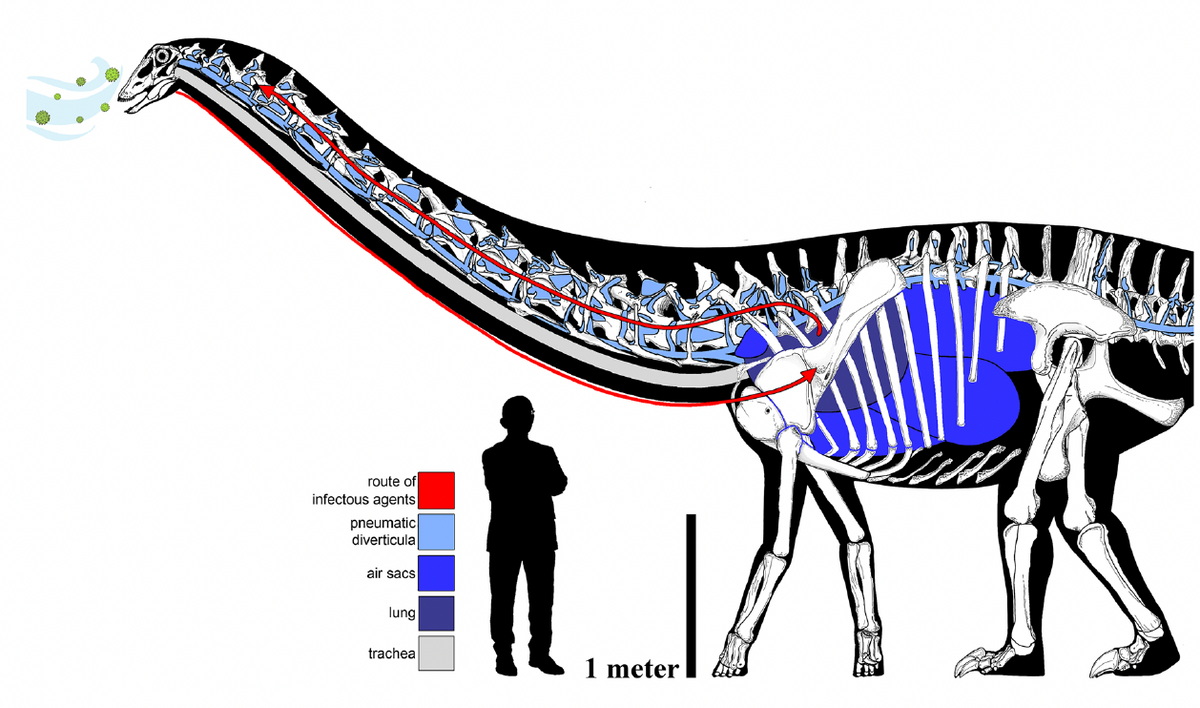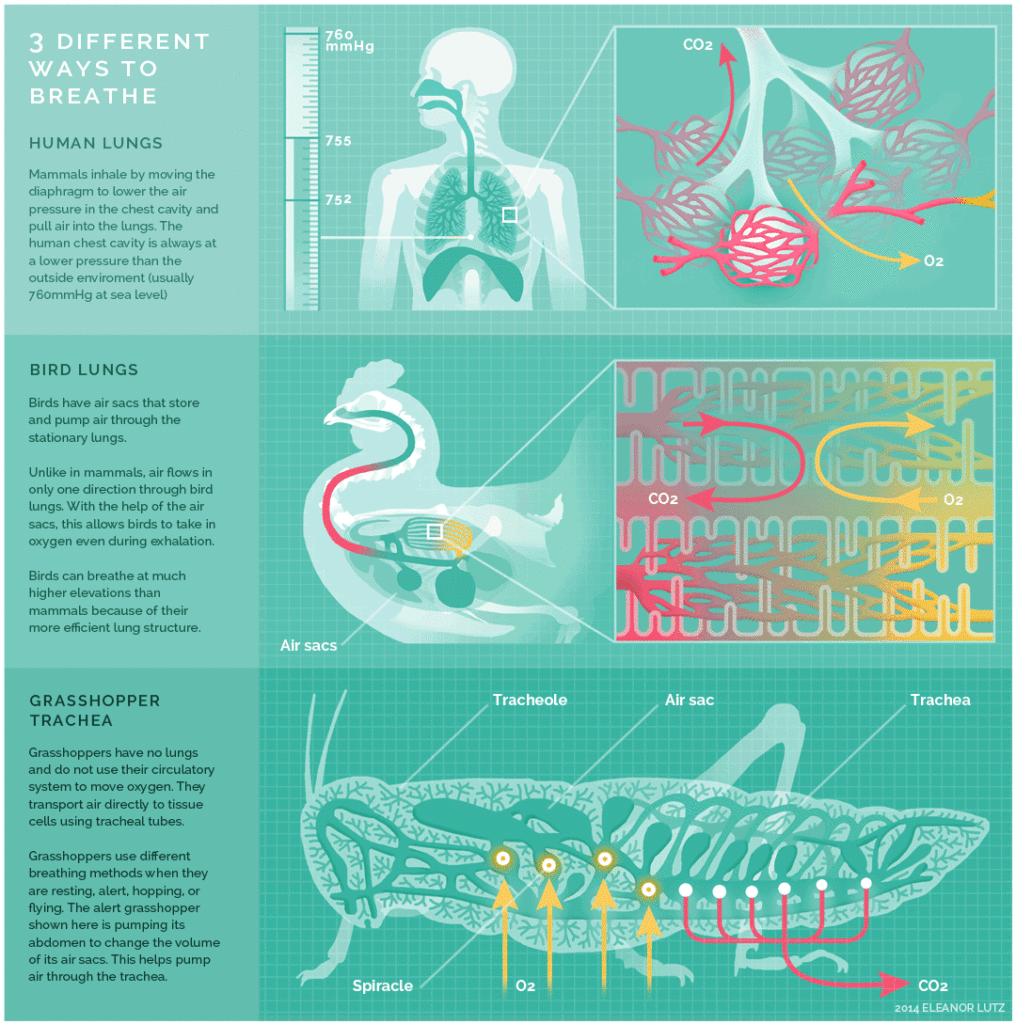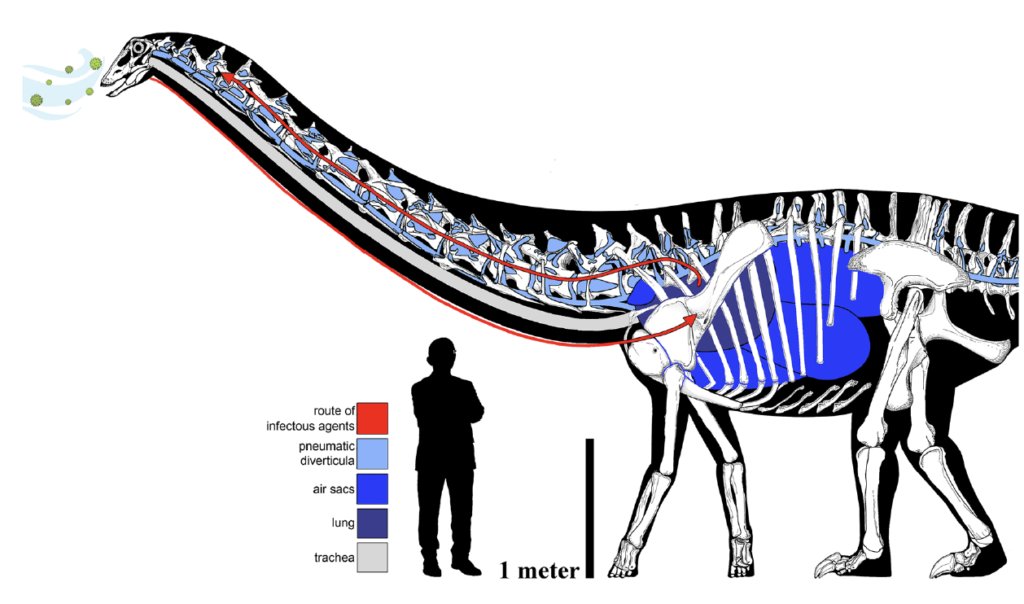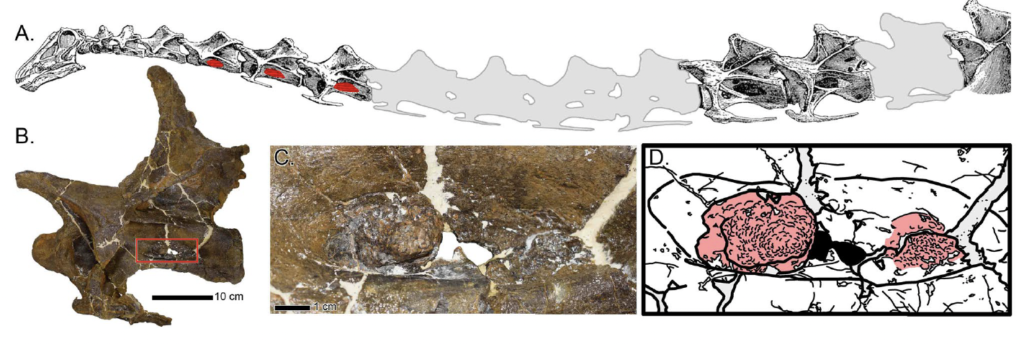A Sick Day for a Sauropod

We know a lot about how dinosaurs’ bodies worked because birds are dinosaurs. We can examine birds and how they function to better understand dinosaurs. This idea not only helps us understand how their bodies moved and behaved, but also how illness affected them.
That is what this [article] is about. Birds can get respiratory diseases (sickness in their lungs, throats, noses, and air sac system). One of the differences between birds and humans is that bird lungs are not just connected to their throats. Birds have a complicated set of other sacs connected to their lungs. The air flow through those sacs and into their lungs happens in a single direction, so every time the bird breaths in and out, fresh air is brought to the lungs. That’s not like what we, as mammals, have. Our air goes in and out of our lungs through the same passage, so every time we breath in, we have to breath in some air that was already in our lungs. Bird lungs are much more efficient than mammal lungs.

The flip side to this is that birds have more organ related to their breathing systems that can get sick. They can have illnesses in their lungs and air sacs. And as the air sacs carve spaces for themselves in the nearby bone, many illnesses in the air sacs can create illness in the bone. Sauropods, the long-necked dinosaurs, had the same system of air sacs invading bone in their bodies.

The authors describe a diplodocine (specimen MOR 7029) that had a deformation in the bones of the neck. Because those bones would have surrounded an air sac, it is likely that the dinosaur had an infection in the air sacs that caused the surrounding bone to react. The authors describe many respiratory diseases in birds that could have been the cause of this infection.

But because we are only able to analyze the bones, the authors tell us that it is hard to know exactly which disease caused this. They also say that the most likely cause was an infection from a fungus known from similar environments. We have fossils of that fungus from the Eocene, so it’s not too much of a stretch to assume it was around in the Mesozoic as well. The better understanding we have of birds, the more we can understand their extinct relatives.